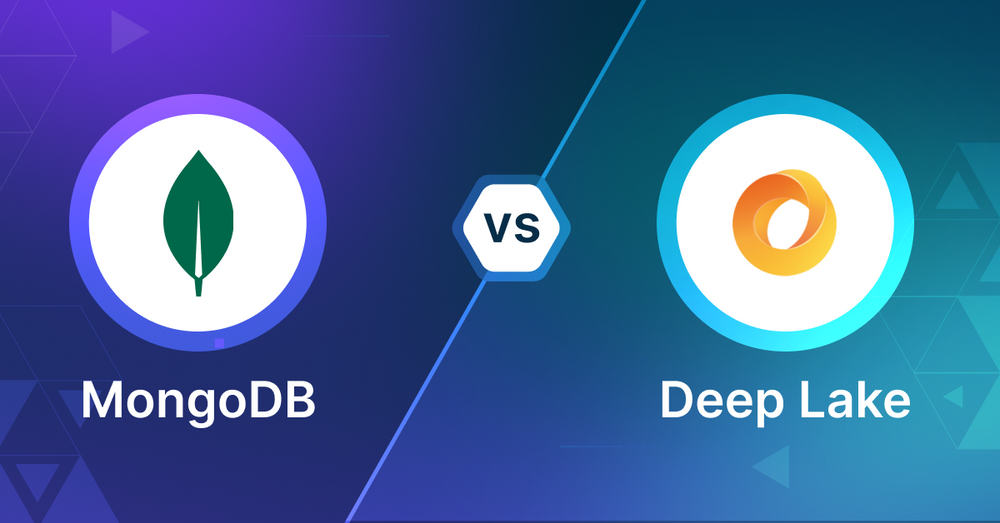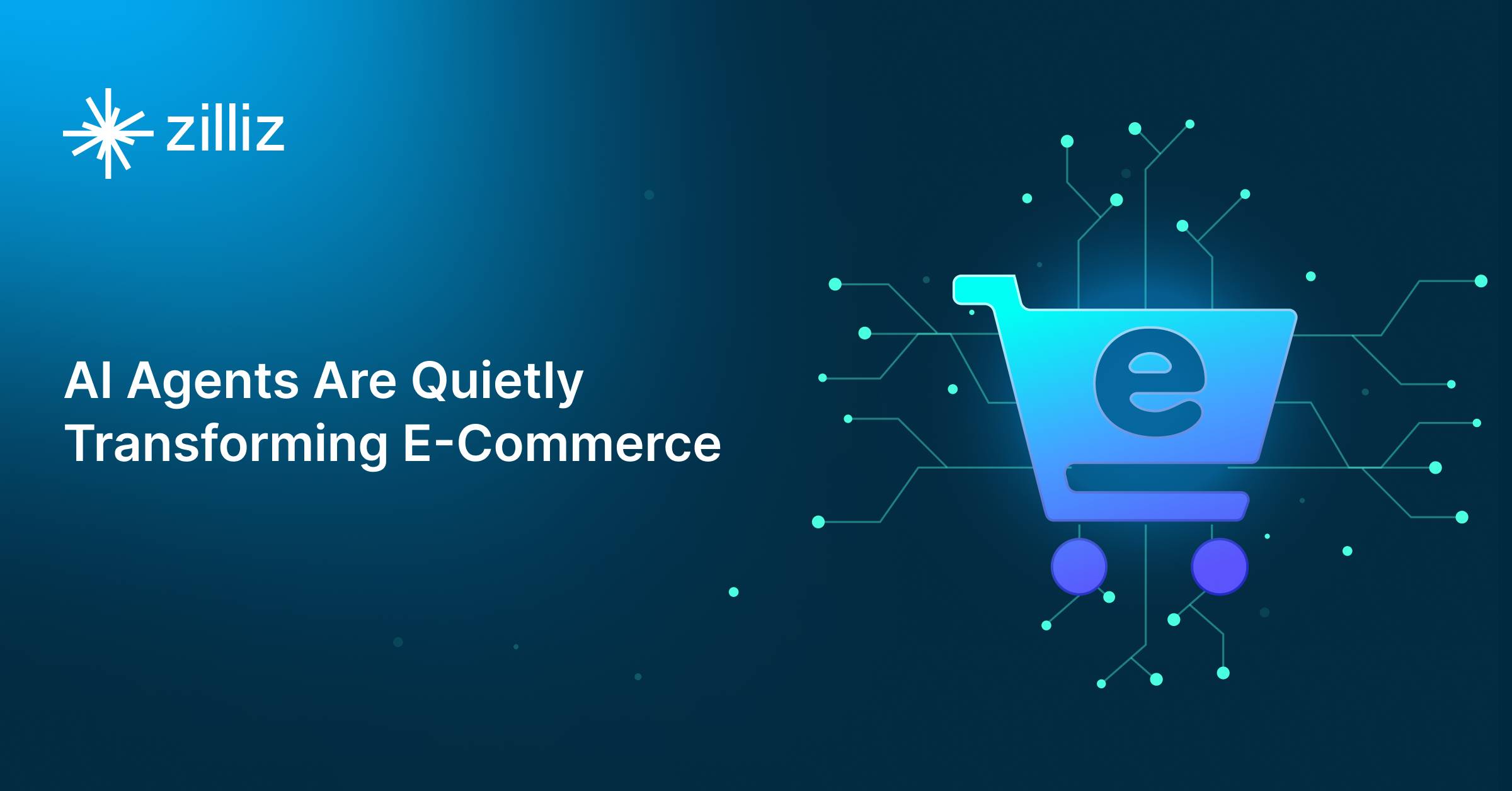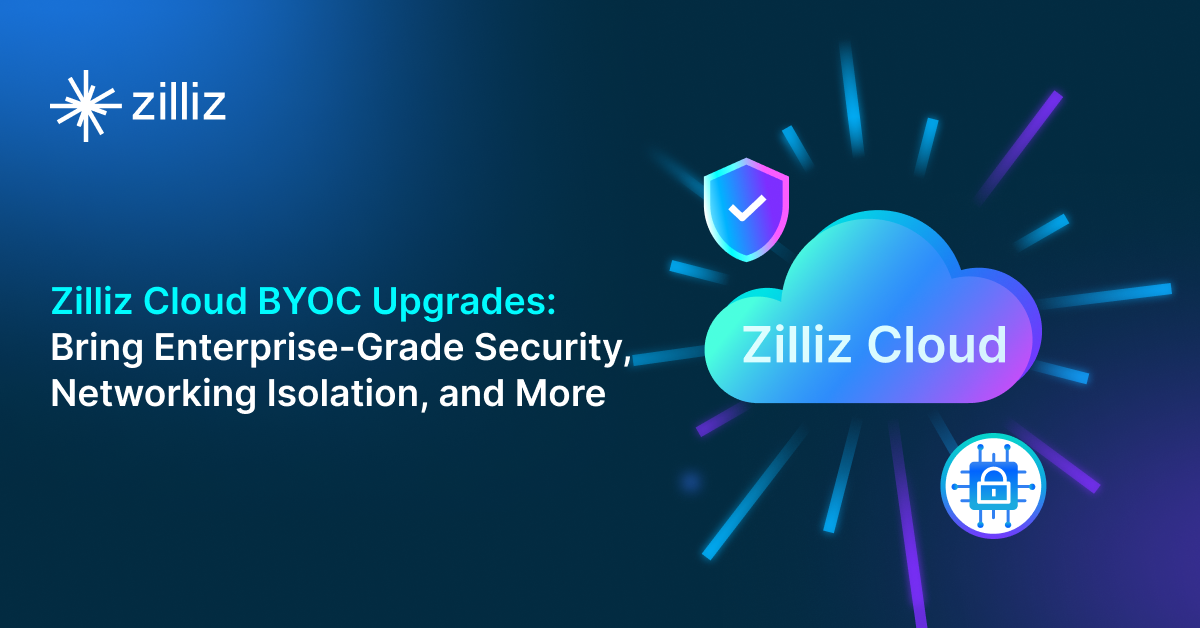MongoDB vs Deep Lake: Selecting the Right Database for GenAI Applications

As AI-driven applications evolve, the importance of vector search capabilities in supporting these advancements cannot be overstated. This blog post will discuss two prominent databases with vector search capabilities: MongoDB and Deep Lake. Each provides robust capabilities for handling vector search, an essential feature for applications such as recommendation engines, image retrieval, and semantic search. Our goal is to provide developers and engineers with a clear comparison, aiding in the decision of which database best aligns with their specific requirements.
What is a Vector Database?
Before we compare MongoDB vs Deep Lake, let's first explore the concept of vector databases.
A vector database is specifically designed to store and query high-dimensional vectors, which are numerical representations of unstructured data. These vectors encode complex information, such as the semantic meaning of text, the visual features of images, or product attributes. By enabling efficient similarity searches, vector databases play a pivotal role in AI applications, allowing for more advanced data analysis and retrieval.
Common use cases for vector databases include e-commerce product recommendations, content discovery platforms, anomaly detection in cybersecurity, medical image analysis, and natural language processing (NLP) tasks. They also play a crucial role in Retrieval Augmented Generation (RAG), a technique that enhances the performance of large language models (LLMs) by providing external knowledge to reduce issues like AI hallucinations.
There are many types of vector databases available in the market, including:
- Purpose-built vector databases such as Milvus, Zilliz Cloud (fully managed Milvus)
- Vector search libraries such as Faiss and Annoy.
- Lightweight vector databases such as Chroma and Milvus Lite.
- Traditional databases with vector search add-ons capable of performing small-scale vector searches.
MongoDB is a NoSQL database that stores data in JSON-like documents and Deep Lake is a data lake optimized for vector embeddings. This post compares their vector search capabilities.
MongoDB: The Basics
MongoDB Atlas Vector Search is a feature that allows you to do vector similarity searches on data stored in MongoDB Atlas. You can index and query high-dimensional vector embeddings along with your document data and do AI and machine learning right in the database.
At its core, Atlas Vector Search uses the Hierarchical Navigable Small World (HNSW) algorithm for indexing and searching vector data. This creates a multi-level graph of the vector space so you can do Approximate Nearest Neighbor (ANN) searches. It’s a balance of speed and accuracy for large scale vector search. Atlas Vector Search also supports Exact Nearest Neighbors (ENN) searches which prioritizes accuracy over performance for queries of up to 10,000 documents.
One of the big advantages of Atlas Vector Search is its integration with MongoDB’s flexible document model. You can store vector embeddings along with other document data so you can search more contextually and precisely. You can query any kind of data that can be embedded up to 4096 dimensions. Atlas Vector Search allows you to combine vector similarity searches with traditional document filtering. For example, a semantic search for products could be filtered by category, price range or availability.
Atlas Vector Search also supports hybrid search, combining vector search with full text search for more granular results. This is different from Atlas Search which is focused on keyword based search. The platform integrates with popular AI services and tools so you can use it with embedding models from providers like OpenAI, VoyageAI and many others listed on Hugging Face. It also supports open-source frameworks like LangChain and LlamaIndex for building applications that use Large Language Models (LLMs).
To ensure scalability and performance, MongoDB Atlas provides Search Nodes, which provides dedicated infrastructure for Atlas Search and Vector Search workloads. This allows you to have optimized compute resources and independent scaling of search needs so you get better performance at scale.
By having these capabilities in the MongoDB ecosystem, Atlas Vector Search is a full solution for developers building AI powered applications, recommendation systems or advanced search features. No need for a separate vector database, you can use MongoDB’s scalability and rich features along with vector search.
What is Deep Lake? An Overview
Deep Lake is a specialized database built for handling vector and multimedia data—such as images, audio, video, and other unstructured types—widely used in AI and machine learning. It functions as both a data lake and a vector store:
- As a Data Lake: Deep Lake supports the storage and organization of unstructured data (images, audio, videos, text, and formats like NIfTI for medical imaging) in a version-controlled format. This setup enhances performance in deep learning tasks. It enables fast querying and visualization of datasets, making it easier to create high-quality training sets for AI models.
- As a Vector Store: Deep Lake is designed for storing and searching vector embeddings and related metadata (e.g., text, JSON, images). Data can be stored locally, in your cloud environment, or on Deep Lake’s managed storage. It integrates seamlessly with tools like LangChain and LlamaIndex, simplifying the development of Retrieval Augmented Generation (RAG) applications.
Deep Lake uses the Hierarchical Navigable Small World (HNSW) index, based on the Hnswlib package with added optimizations, for Approximate Nearest Neighbor (ANN) search. This allows querying over 35 million embeddings in less than 1 second. Unique features include multi-threading for faster index creation and memory-efficient management to reduce RAM usage.
By default, Deep Lake uses linear embedding search for datasets with up to 100,000 rows. For larger datasets, it switches to ANN to balance accuracy and performance. The API allows users to adjust this threshold as needed.
Although Deep Lake’s index isn't used for combined attribute and vector searches (which currently rely on linear search), upcoming updates will address this limitation to improve its functionality further.
Deep Lake as a Vector Store: Deep Lake provides a robust solution for storing and searching vector embeddings and their associated metadata, including text, JSON, images, audio, and video files. You can store data locally, in your preferred cloud environment, or on Deep Lake's managed storage. Deep Lake also offers seamless integration with tools like LangChain and LlamaIndex, allowing developers to easily build Retrieval Augmented Generation (RAG) applications.
Key Differences
When choosing between MongoDB and Deep Lake as a vector search tool you need to understand the differences. Both have unique features for different use cases in the world of vector databases. Let’s compare them across several key areas to help you make a decision.
Search Methodology
MongoDB Atlas Vector Search uses the Hierarchical Navigable Small World (HNSW) algorithm for indexing and searching vector data. It supports both Approximate Nearest Neighbor (ANN) and Exact Nearest Neighbors (ENN) search. It’s a balance of speed and accuracy.
Deep Lake uses HNSW for ANN search, with multi-threading and memory optimizations. It uses linear embedding search for smaller datasets (up to 100,000 rows) and switches to ANN for larger ones, with the option to adjust this threshold.
Data
MongoDB is great at handling structured and semi-structured data along with vector embeddings. Its flexible document model allows you to store different types of data together, so you can search more contextually and precisely.
Deep Lake is designed for unstructured data like images, audio and video along with vector embeddings. It’s a data lake and a vector store in one so it’s perfect for multimedia heavy AI and machine learning workloads.
Scalability and Performance
MongoDB Atlas has dedicated Search Nodes for optimized compute resources and independent scaling of search workloads. This means performance at scale.
Deep Lake claims to query over 35 million embeddings in under 1 second. But it uses linear search for combined attribute and vector search which may not be good for all use cases.
Flexibility and Customization
MongoDB allows you to combine vector similarity search with document filtering and full-text search.
Deep Lake has version control for datasets and allows search thresholds to be customized. But may not be able to combine attribute and vector search as much as MongoDB.
Integration and Ecosystem
Both systems integrate with popular AI services and tools. MongoDB works with embedding models from OpenAI and VoyageAI and supports LangChain and LlamaIndex.
Ease of Use
MongoDB has an established ecosystem, lots of documentation and developers are familiar with it. If you’re already using MongoDB, adding vector search might be a no-brainer.
Deep Lake’s ease of use depends on your use case especially if you’re working with multimedia data in AI applications.
Cost
MongoDB Atlas is a managed service with different pricing tiers based on usage and features. Costs will increase with scale but you get a fully managed solution.
Deep Lake has options for local storage, cloud storage or their managed service. Cost comparison would depend on your usage and storage needs.
Security Features
MongoDB Atlas has robust security features including encryption, authentication and access control, built on top of its mature database security model.
When to Use Each
MongoDB Atlas Vector Search is the better choice when you have structured or semi-structured data and need vector search capabilities. It’s perfect for projects where you need to combine traditional document filtering with vector similarity searches like advanced product recommendations or content discovery platforms. MongoDB is great when you’re already using MongoDB for your primary data storage and want to add vector search without introducing a new system. Its ability to do hybrid searches, combining vector and full-text search, makes it super useful for applications that need nuanced, context aware search results.
Deep Lake is the better choice when your project involves a lot of unstructured multimedia data like images, audio and video especially in AI and machine learning scenarios. It’s perfect for computer vision tasks, audio processing or any application that requires version control of large datasets along with vector search capabilities. Deep Lake is strong when it can be both a data lake and a vector store so it’s great for research teams or companies building complex AI models that need to manage and query large amounts of multimedia data efficiently.
Conclusion
MongoDB Atlas Vector Search is a solid choice for adding vector search to your existing MongoDB infrastructure, it offers scalability, flexible querying and seamless integration with structured data. Deep Lake is great for unstructured multimedia data, it has specialized features for AI and machine learning workflows. Your choice between these should be guided by your data types, existing infrastructure and the type of search you need. Choose MongoDB if you need a general purpose solution that combines traditional and vector search, especially if you’re already in the MongoDB ecosystem. Choose Deep Lake if you’re managing and searching large amounts of multimedia data in AI centric applications. Ultimately it’s all about aligning the technology’s strengths to your project’s specific needs and performance requirements.
Read this to get an overview of MongoDB and Deep Lake but to evaluate these you need to evaluate based on your use case. One tool that can help with that is VectorDBBench, an open-source benchmarking tool for vector database comparison. In the end, thorough benchmarking with your own datasets and query patterns will be key to making a decision between these two powerful but different approaches to vector search in distributed database systems.
Using Open-source VectorDBBench to Evaluate and Compare Vector Databases on Your Own
VectorDBBench is an open-source benchmarking tool for users who need high-performance data storage and retrieval systems, especially vector databases. This tool allows users to test and compare different vector database systems like Milvus and Zilliz Cloud (the managed Milvus) using their own datasets and find the one that fits their use cases. With VectorDBBench, users can make decisions based on actual vector database performance rather than marketing claims or hearsay.
VectorDBBench is written in Python and licensed under the MIT open-source license, meaning anyone can freely use, modify, and distribute it. The tool is actively maintained by a community of developers committed to improving its features and performance.
Download VectorDBBench from its GitHub repository to reproduce our benchmark results or obtain performance results on your own datasets.
Take a quick look at the performance of mainstream vector databases on the VectorDBBench Leaderboard.
Read the following blogs to learn more about vector database evaluation.
Further Resources about VectorDB, GenAI, and ML
- What is a Vector Database?
- MongoDB: The Basics
- What is Deep Lake? An Overview
- Key Differences
- When to Use Each
- Conclusion
- Using Open-source VectorDBBench to Evaluate and Compare Vector Databases on Your Own
- Further Resources about VectorDB, GenAI, and ML
Content
Start Free, Scale Easily
Try the fully-managed vector database built for your GenAI applications.
Try Zilliz Cloud for FreeKeep Reading

AI Agents Are Quietly Transforming E-Commerce — Here’s How
Discover how AI agents transform e-commerce with autonomous decision-making, enhanced product discovery, and vector search capabilities for today's retailers.

Demystifying the Milvus Sizing Tool
Explore how to use the Sizing Tool to select the optimal configuration for your Milvus deployment.

Zilliz Cloud BYOC Upgrades: Bring Enterprise-Grade Security, Networking Isolation, and More
Discover how Zilliz Cloud BYOC brings enterprise-grade security, networking isolation, and infrastructure automation to vector database deployments in AWS
The Definitive Guide to Choosing a Vector Database
Overwhelmed by all the options? Learn key features to look for & how to evaluate with your own data. Choose with confidence.